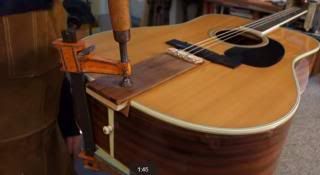I'm on the tail end of my very first build from a kit and I have some question on intonation/compensation. Some of you may have seen my thread: Build Thread: StewMac Tenor Ukulele Kit
There has been some awesome UU members giving me tips and advice along the way, and now I've encountered the hurdle of locating the bridge. Here's what I'm unsure about:
The stewmac product page lists the scale length as 17-3/32" (17.09375"), however, the instructions state to place the bridge with the center of the saddle at exactly 17-3/32". Furthermore, when I use the fret calculator on the stewmac site and enter 17.09375 as the scale length with 19th frets on an ukulele, it tells me to place the bridge at 17.19460".
So I'm real confused.
I'm a gigging musician and hope to use this instrument at gigs. I have some ukes I've purchased with real bad intonation, so I want to get this right. Can someone give me advice on how to make sense of this?
Thanks so much in advance!
There has been some awesome UU members giving me tips and advice along the way, and now I've encountered the hurdle of locating the bridge. Here's what I'm unsure about:
The stewmac product page lists the scale length as 17-3/32" (17.09375"), however, the instructions state to place the bridge with the center of the saddle at exactly 17-3/32". Furthermore, when I use the fret calculator on the stewmac site and enter 17.09375 as the scale length with 19th frets on an ukulele, it tells me to place the bridge at 17.19460".
So I'm real confused.
I'm a gigging musician and hope to use this instrument at gigs. I have some ukes I've purchased with real bad intonation, so I want to get this right. Can someone give me advice on how to make sense of this?
Thanks so much in advance!

